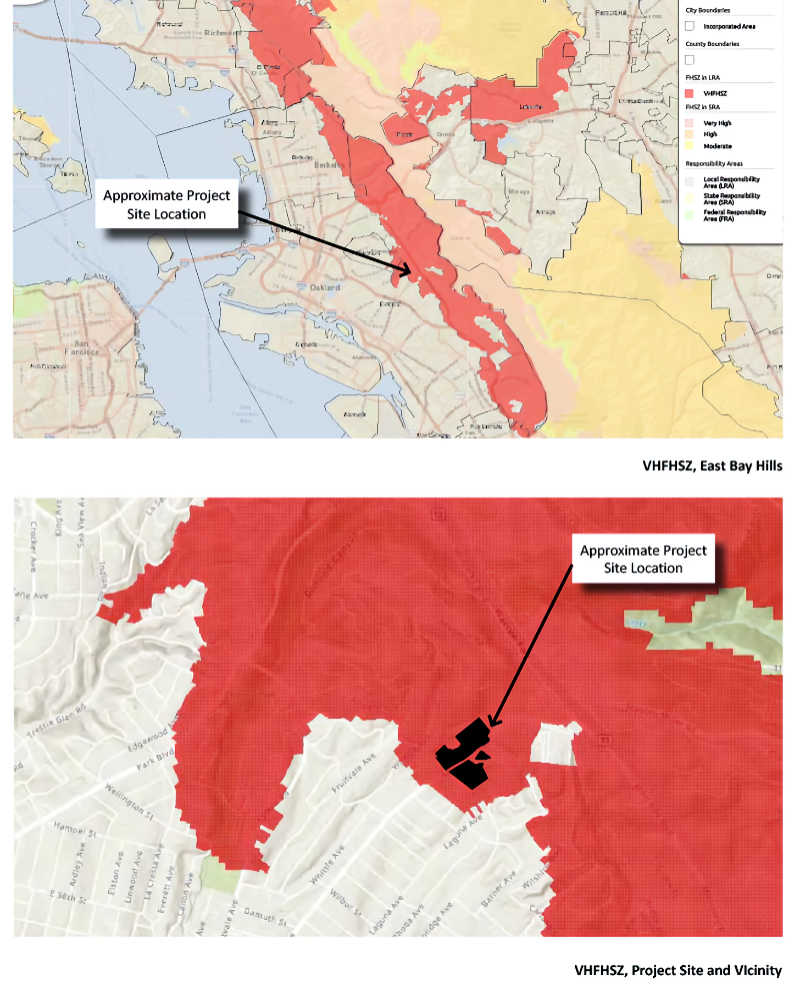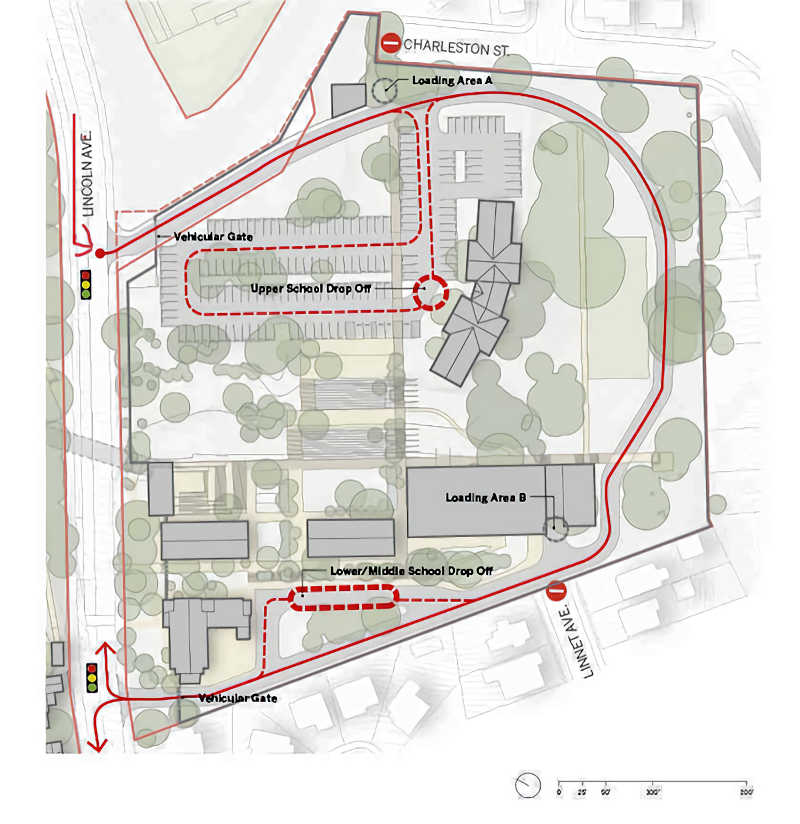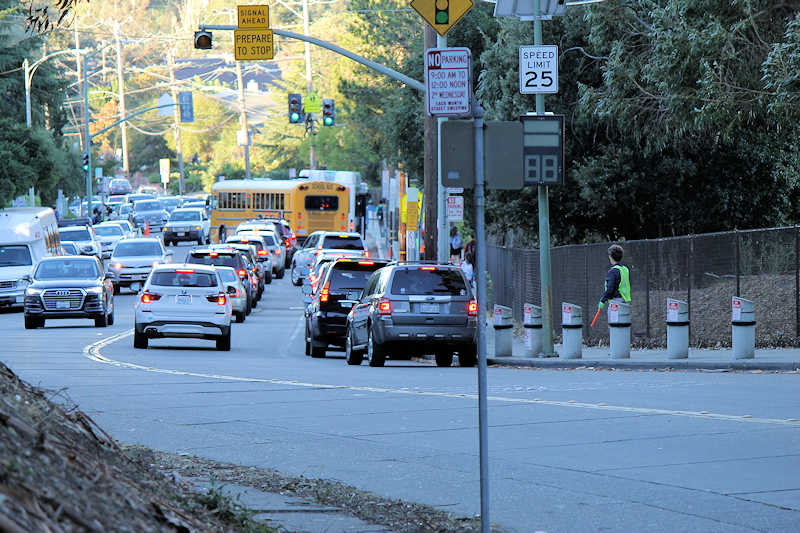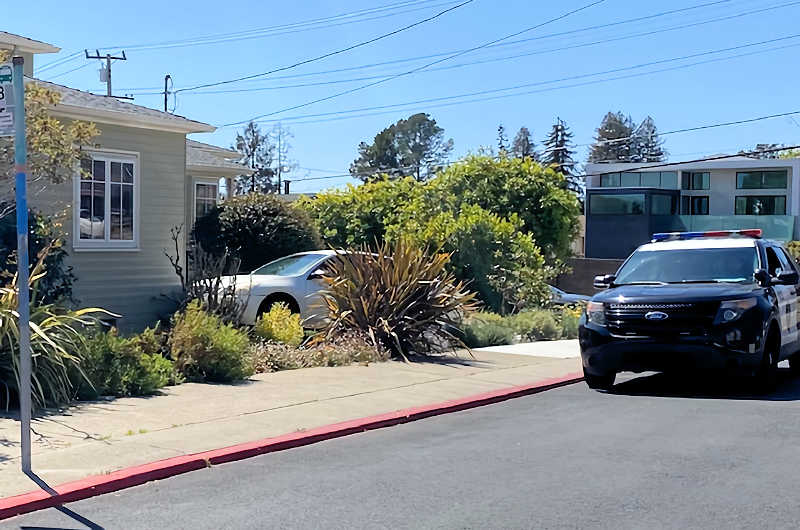HRS Expansion Impacts
The NSC reviewed the Draft Environmental Impact Report (DEIR) on the proposed expansion development plan for the Head-Royce School. The project has significant negative impacts on surrounding neighborhoods, the environment, safety, and public infrastructure. The DEIR is wholly inadequate in addressing the significance of these impacts. Below you’ll find the analysis of experts commissioned by the NSC to respond to the DEIR in areas of major impact on Oaklanders and the surrounding neighborhood.
Enrollment Increase
The proposed project includes an enrollment increase of 37 percent, adding 344 more students to create an enrollment of 1,250 students along with additional employees, staff, and faculty. The current enrollment of about 900 is already overwhelming the public infrastructure surrounding the school and is constantly causing nuisance problems for the residents. The DEIR dramatically understates the importance of the impact of increasing the total number of people on campus.Public Safety - Fire and Evacuation
The proposed development plan does nothing to correct the current problem of HRS having no realistic emergency evacuation plan. The development dramatically increases density and poses risk to the lives of students and residents above and around the school's properties.
- 1st Expert Comment Letter and Resume from William Weisgerber, President Weisgerber Consulting, re: HRS Draft EIR - Wildfire Evacuation and Vegetation Mgmt (Dec. 7, 2021)
- 2nd Expert Comment Letter from William Weisgerber re: HRS Final EIR - Emergency Evacuation Planning (Mar. 20, 2023)
Transportation
The misuse of data and vagueness of the DEIR calls into serious question its validity and credibility regarding transportation and traffic impacts. These impacts not only affect neighbors, but Head-Royce students and families, as well as the thousands of Oaklanders who daily use Lincoln Avenue and Highway 13. The majority of student drop-offs and pick-ups are from vehicles traveling from Hwy 13, then downhill on Lincoln Avenue. The broader community will be subject to increased traffic congestion on Lincoln Avenue and safety issues regarding emergency vehicle access.The project proposes:
- Adding a third traffic signal on Lincoln Avenue
- Adding a left turn lane to allow access to a perimeter road used for student drop offs / pick- ups, and for people attending events at the performing arts center, Building 0 and the amphitheater
- Placement of the internal road along the perimeter of the South Campus within feet of neighboring houses
- Reconfiguration of lanes on Lincoln Avenue
- Construction of a tunnel under Lincoln Avenue to link the two campuses
As seen in this diagram, the red line represents the proposed internal perimeter road on the South Campus. Lincoln Avenue would be re-engineered with an additional stoplight, a left turn lane and a left and right turn onto Lincoln Avenue from an exit point. Cars and trucks would maneuver downhill within feet of homes for several hours a day to drop off students and make deliveries to two loading docks.
The current Head-Royce drop-off and pick-up congestion on Lincoln Avenue
Impatient drivers idling behind a car waiting to turn left onto Alida Street resulted in an accident involving a car running into a house on Lincoln Avenue.
Entertainment Venue
If the HRS development project is approved by the City Council, on its North and South campuses, Head-Royce School will have four theaters, two amphitheaters, two food service areas, multiple rooms for performing arts, and several pavilion/outdoor areas for entertainment guests to mingle.The proposed South Campus performing arts center is a 15,900-square foot building with 450 seats. This large building is situated just feet from homes.
The school plans to rent entertainment facilities for public use.
The South Campus is not an appropriate location for an entertainment venue and will cause multiple safety and nuisance problems.
Additional Negative Impacts on the Greater Neighborhood
- Flooding from inadequate planned drainage system
- Noise from a new outdoor amphitheater and from loudspeakers during school hours and non-school events would be heard for many blocks
- Noise from the entertainment venue generated by events operated by non-school companies and organizations
- Disturbances from the proposed South Campus perimeter road including cars and trucks idling engines, downhill braking and backup bells
- Opening public access points to the South campus next to homes
- An estimated 3.5 years of construction
- 1st Expert Comment Letter from William Vandivere, Clearwater Hydrology re: HRS Draft EIR - Hydrology (Dec. 18, 2021)
- 1st Expert Comment Letter and Resume from Edward L Pack, Accoustical Consultants re: HRS Draft EIR - Noise (Dec. 8, 2021)
- 2nd Expert Comment Letter from William Vandivere, Clearwater Hydrology re: HRS Final EIR - Hydrology (April 15, 2023)
- 2nd Expert Comment Letter from Edward L Pack, Accoustical Consultants re: HRS Final EIR - Noise (March 27, 2023)
Habitat and Native Trees
The development of the South Campus will cause the loss of hundreds of mature, beautiful, healthy trees and with them, their bird and wildlife habitat.
| |
Head-Royce Project: Density and Danger
Already located in this urban residential neighborhood are the Mormon Temple, Ability Now, The Greek Orthodox Cathedral, Head-Royce School, Sequoia Elementary School, Brett Hart Middle School, the KSS Immersion Preschool, and more than 250 homes many with ADUs surrounding the South Campus on three sides. It is a dense area. The school is located in a Very High Fire Hazard Severity Zone and about half a mile from the Hayward Earthquake Fault.
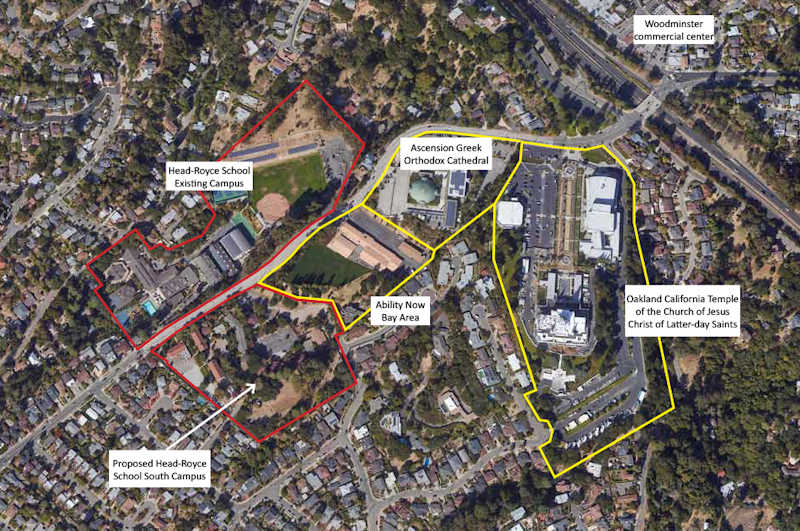
Previous Developments
Head-Royce purchased a number of residential properties in the neighborhood. In January 2018, at the request of HRS, the City of Oakland granted a permit for HRS to lease an empty field on Lincoln Avenue for school sports activities. That field abuts residential backyards. The NSC and the neighbors most impacted objected to the school's requested use of the field 12 hours a day on weekdays and additional time on weekends with no provision for a sound wall. While the City approved a permit allowing HRS to use the field, the City imposed a shorter time period for use of the field and imposed conditions on its use.


